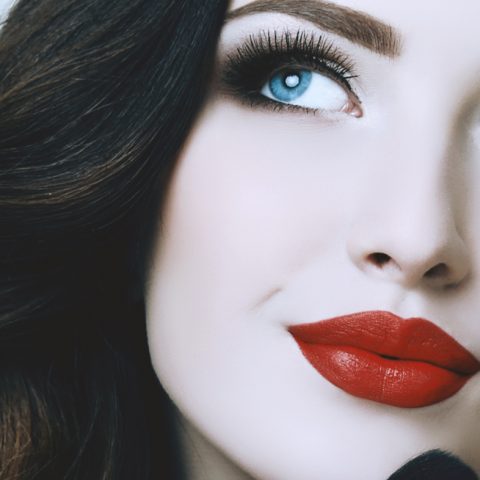How to take care of your face? My ways to have flawless complexion!
The complexion gives away everything. It shows the signs of fatigue, aging, and stress. Although the condition and appearance of facial skin are largely dependent on genes and age, it is also affected by the lifestyle, in particular, the way we take care of it. Do you know how to take care of for your complexion? Discover my methods for a beautiful facial skin.
Types of skin in the past and today
The traditional division into dry, oily and combination skin does not exist anymore. Environmental pollution, excessive exposure to the sun and excessive use of strong cosmetics are to blame for. As a consequence, acne can go hand in hand with a dry complexion, and people over 30 suffer from acne as well. In the past, life was simpler and such anomalies did not take place. Today, as a result of civilization changes, we distinguish:
- seborrhoeic complexion (including oily and dry skin),
- dry and dehydrated complexion,
- sensitive skin (with dilated capillaries and a tendency to hypersensitivity and allergy).
To choose the right cosmetics and skin care methods, you must first determine its type.
Good habits
- Diet
First of all, eat clean. A healthy diet involves eating a large amount of vegetables, fruit and animal protein. Its deficiency makes the skin thin, flaccid and less elastic. This is important information especially for women in their forties.
Secondly, drink unlimited amounts of mineral water. Properly selected cosmetics moisturize you on the outside, and drinking water – from the inside.
- Skin Care
I cannot stress this enough: be gentle with yourself. Do not scrub your face with soap and do not rub it with a towel. In addition, use a face wash with acidic pH and use salicylic acid for oily skin.
Do not pop your pimples and blackheads. They are filled with sebum, which is broken down by accumulated bacteria. If you pop your pimples or blackheads, you may end up with a serious skin infection. For this reason, such skin imperfections should be treated with special preparations until they are completely gone.
Do you think that sebum is your enemy? You couldn’t have been more wrong. Sebum mixed with sweat creates a lipid coat on the surface of the body, which lubricates the skin and prevents it from drying out and cracking. The acidic sebum reaction has antibacterial and antifungal properties. Sebum protects the skin and makes it more elastic. As a matter of fact, it is your ally. The problem only appears when it appears in excessive amounts. As a consequence, the skin becomes greasy, shiny and covered with pimples. In addition, the sweat contains a lot of organic compounds, which makes it a great fodder for bacteria, and unwashed – smells really bad. In order to get rid of excess sebum from the face, apply mattifying creams, powders and use blotting papers. However, an antiperspirant will be invaluable in the fight with the sweating face.
- Lifestyle
Do you remember what they told us at school? That working out equals healthy body and mind. Unfortunately, this is true, especially if it is done outdoors in the open air. Skin provided with oxygen results in a complexion full of light, and the proper blood supply makes it easier to absorb the nutrients contained in cosmetics.
What’s more, get enough sleep. During your sleep, the body regenerates twice as fast and absorbs the nutrients contained in the cosmetics twice as quickly.
!!! Do not smoke! One cigarette weakens the microcirculation of the facial skin for a few hours. Do you know what it means? That the skin is barely breathing at this time. This is what lies behind the yellow-gray complexion of smokers.
Healthy diet
Start your skincare from within. What does it mean? Eat nutritious foods. Vitamins and minerals contained in the food get into the dermis through the blood vessels and thanks to that feature, they nourish it. What to eat in order to take better care of your complexion?
Good effects on the complexion are provided by products rich in vitamin A, C, E and B group and zinc and essential fatty acids (EFA).
- Vitamin A promotes exfoliation of the epidermis and regulates the amount of secreted sebum. It is found in carrots and dried apricots,
- Vitamin C accelerates collagen synthesis, protects against ultraviolet radiation and strengthens blood vessels. It is especially found in currants and citrus fruit,
- Vitamin E fights free radicals and co-creates connective tissue. It is found among others in vegetable oils, hazelnuts, sunflower seeds and almonds,
- B vitamins are found in milk, cereal products, legumes, almonds, and walnuts. Their deficiency causes inflammation of the skin and mucous membranes and seborrhea. With vitamin B5 deficiency, the skin becomes hyperkeratotic, and vitamin B2 – breaks the corners of the mouth,
- Zinc prevents acne formation. It is found in wheat bran and pumpkin seeds,
- EFAs reduce the fragility of blood vessels, the consequence of which are so-called “spider veins”. EFAs are found in vegetable oils, margarine, walnuts and sunflower seeds.
Cosmetics suitable for various skin problems
The two basic skin problems are dehydration and seborrhea. In order to moisturize the skin, we should use moisturizing cosmetics, and in order to reduce seborrhea – mattifying preparations.
Mattifying cosmetics aim at not placing water into the skin but reducing its evaporation from the dermis. Therefore, they should contain highly hygroscopic (water-binding) substances, for example, hyaluronic acid.
However, mattifying cosmetics are designed to regulate the secretion of sebum, that is, exfoliate the epidermis. This is how fruit acids, salicylic acid, and lactic acid work.
What are your ways for a beautiful complexion? Let me know in the comments!





Leave a Reply